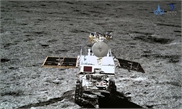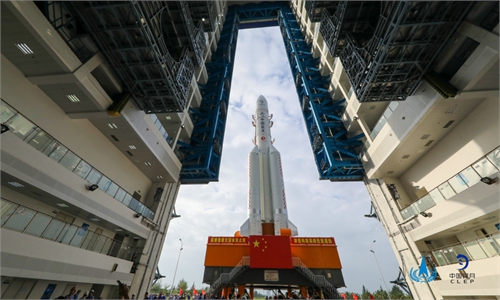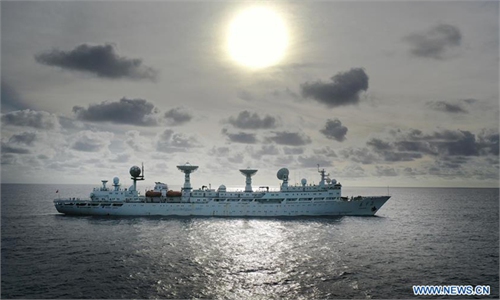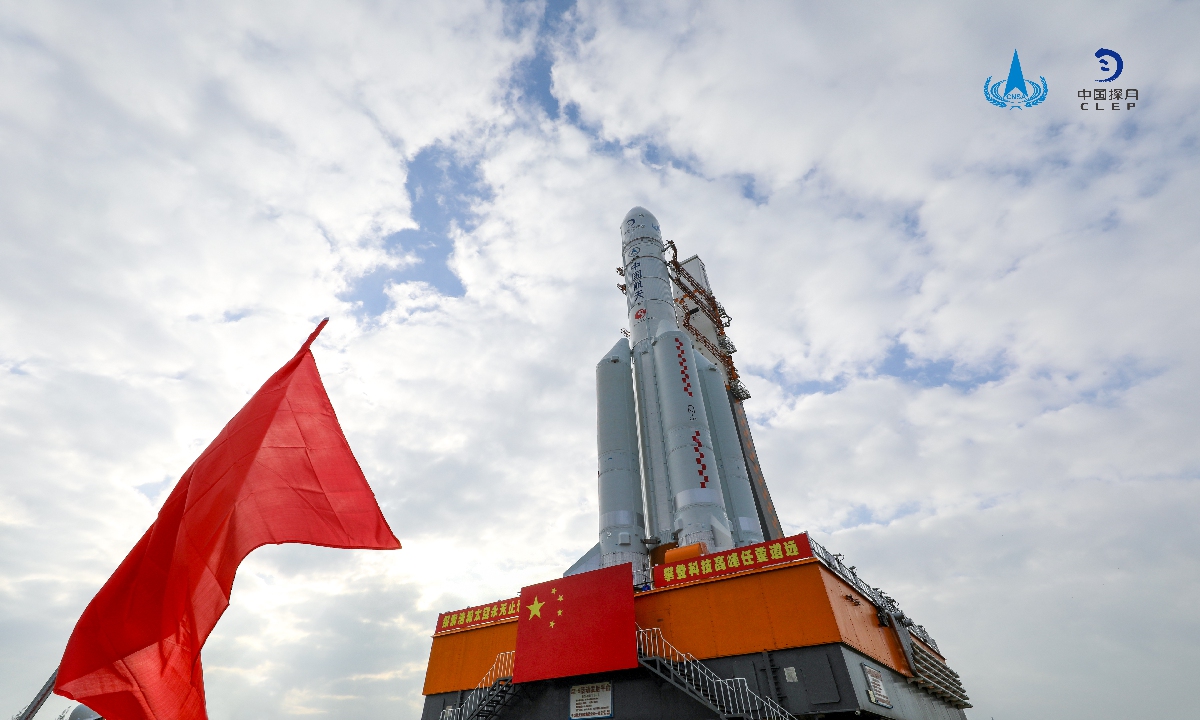
Long March5 Y5 carrier rocket has been vertically transferred to its launch area at the coastal Wenchang Satellite Launch Center in South China's Hainan Province, set for upcoming lunar sample returning Chang'e-5 mission in late November. Photo: CNSA
China is set to undertake its Chang'e-5 lunar probe mission, the latest in a series of increasingly complex trips to moon's surface led by the China National Space Administration (CNSA), with the aim of bringing rocks back to Earth for the first time in more than 40 years. Scientists are hoping that the survey will help improve the understanding of the evolution process of the Earth's natural satellite.
The Long March-5 Y5 carrier rocket commissioned for the Chang'e-5 lunar mission has started fuel injection, and it is set to launch the probe on Tuesday between 4 and 5 am, the Global Times learned from the CNSA.
The scheduled launch period has taken into consideration the relative Earth-moon positions and several other factors, the CNSA said.
Global Times learned from China's space authorities that all system units involved in the upcoming Chang'e-5 lunar probe mission, including the Beijing Aerospace Control Center, Xi'an Satellite Control Center, Wenchang Space Launch Center and Yuanwang space tracking vessels, conducted a final joint training prior to the eventual launch on Sunday.
If the mission is successful, it will retrieve the first lunar material since the US and Soviet missions did so in the 1960s and 1970s, media reported.
The launch date has been set for around late November. The probe and the Long March-5 Y5, China's strongest launch vehicle commissioned for the mission, were vertically transferred to the launch pad in Wenchang, South China's Hainan Province on November 17.
Dubbed one of the most complicated and most challenging space exploration projects, Chang'e-5 will perform the third stage of China's current lunar programs, which involves three phases - orbiting, landing and return. The first two phases have been completed successfully.
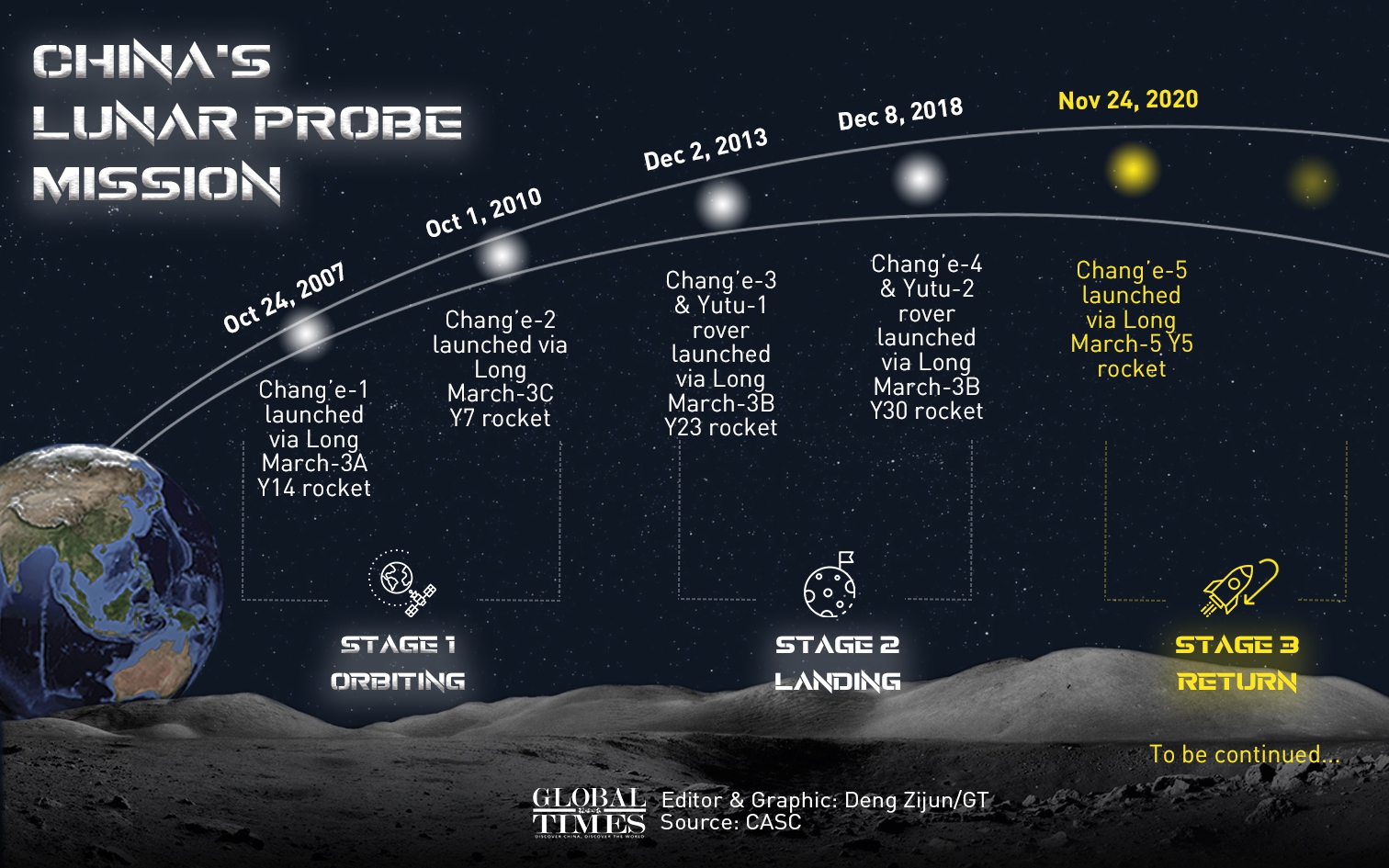
China's lunar probe mission Infographic: GT
The Chang'e-5 probe is expected to realize lunar sample collection, takeoff from the moon, rendezvous and docking in lunar orbit and high-speed reentry into the Earth's atmosphere, marking breakthroughs in China's aerospace history.
It is expected to conduct the first-ever robotic sample collecting on the lunar surface, spending two days on the moon and collecting around 2 kilograms of lunar material, a first in China's history, Global Times has learned.
Media previously reported that the Chang'e-5 is scheduled to touch down in an area that has never been visited either by probe or human, in a massive lava plain known as Oceanus Procellarum, or "Ocean of Storms" - a region in moon's northwest corner which is visible to the naked eye from Earth.
Scientists believe that the rocks and soil in the region are only 3.7 billion years old. Compared with previous lunar samples brought back to Earth, it will enrich our knowledge of the Moon. Some engineering factors were also taken into consideration in choosing this site.
The lunar material to be collected by the Chang'e-5 probe was formed from the space weathering of lunar rocks after meteorite impact, solar wind and cosmic ray radiation. It consists of a considerable amount of rock fragments, minerals and meteorites, which provide valuable information for the study of moon's geological evolution, as well as solar activities, Xiao Long, a professor at Wuhan-based China University of Geosciences, told the Global Times.
The hopeful completion of the lunar sample return mission will signal a series of breakthroughs in China's aerospace industry, providing data and technical support for future manned landing and moon base site selection, Pang Zhihao, a Beijing-based space expert, told the Global Times on Monday.
When asked why the Chang'e-5 probe has such a low profile and chose to take off in the small hours rather than day time, insiders told the Global Times that early morning would facilitate the trajectory designed for the complex mission.
Also, the early morning choice would help reduce interference from the sun, as the solar radiation would disrupt the transmission of electric signals, affecting the spacecraft's tracking and controlling by ground personnel, they said.
There would also be less cloud cover in the early morning and stabler weather, which is good news for signal transmission and scientists' observations, they revealed.
China launched its first lunar probe mission, the Chang'e-1, on October 24, 2007 via a Long March 3A Y14 carrier rocket. To date, China has launched four missions which were named after the lunar goddess Chang'e, with domestically developed Long March rockets, and scoring a perfect success rate.
The highlight of the Chang'e lunar probe missions was the Chang'e-4, which completed the first ever soft landing on the far side of the satellite in January 2019.

